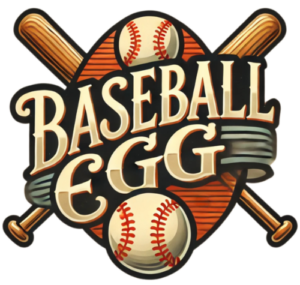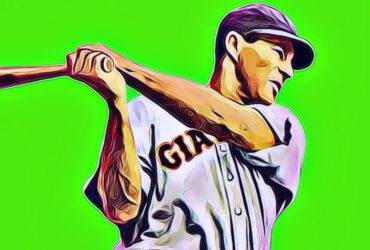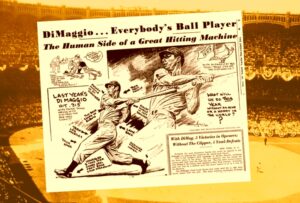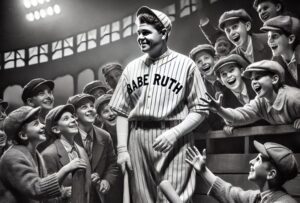Next month in Nashville, the National Baseball Hall of Fame will announce the results of voting for the Pre-Integration Era ballot. Ten candidates are on the ballot, which was selected by an 11-person panel of baseball historians.
Those historians dropped the ball by not including the name of one of the most important men in baseball history.
Francis Joseph O’Doul answered to many names during his lifetime, from Frankie to Frank to Lefty to The Man in the Green Suit. His incredible career in baseball is one that’s unmatched by any figure in history and for that reason he deserves to at least be considered for election to the Hall of Fame. His absence from the ballot is a glaring omission.
O’Doul is worthy of consideration for a couple of reasons:
His playing record
In 11 big league seasons, Lefty O’Doul hit .349 and twice won batting titles: in 1929 for the Phillies and in 1932 for the Dodgers. In ’29 he hit .398 with a National League record 254 hits. He batted .383 the following year and only once hit below. 300 in his seven years as a major league outfielder. O’Doul began his career as a pitcher but an arm injury ended that before it really got started in 1923. That was with Boston, and just like with another slugger (Babe Ruth) a few years earlier, the Sox saw the batting prowess of O’Doul and suggested he try his hand at playing every day. That’s when Lefty embarked on his stellar career as a batsmen. He was so good that he was a member of the NL’s first All-Star team in 1933, a roster that included more than a dozen Hall of Famers. The previous season, Lefty had out-hit them all. After the ’34 season at the age of 37, O’Doul accepted an offer from his hometown San Francisco Seals to manage in the Pacific Coast League. He was paid the princely sum of $4,150, more than he was making in the big leagues. He never played in the majors again though he surely could have padded his numbers. His .349 batting average is fourth in baseball history for players with more than 900 games played.
His contribution to the growth of baseball in Japan
It’s not an exaggeration to say that without Lefty O’Doul there wouldn’t be a Japanese Baseball League with stars of the quality to play in the major leagues in the U.S. Back in 1931, O’Doul was included in a group of MLB players who traveled to Japan on a goodwill tour to promote the game. At that time there were no organized baseball leagues in Japan, and after a few more trips to Japan in the 1930s (most of them organized by the enthusiastic O’Doul), that island nation was sufficiently baseball crazy. O’Doul was an iconic figure to the Japanese – he established clinics that taught the game to them, showed them how to recruit and train players, instructed them in physical fitness and the ways to throw certain pitches, and so on. In 1936 the first pro league was formed in Japan. O’Doul returned to the nation several times throughout his life to continue a relationship with the Japanese. He was so fond of the nation that when Pearl Harbor was bombed in 1941 he took it as a personal affront and went into a depression for weeks. Later, after relations normalized between the U.S. and Japan, O’Doul continued to foster a relationship across the Pacific Ocean.
Taken individually, neither of the two points outlined above are enough to earn Lefty automatic entry to Cooperstown, but they are at least enough to get him on the ballot to be considered, especially his batting record and contributions to international baseball.
In 2007, Lefty appeared on the Hall’s Veterans Committee ballot for the only time but no one was selected that year, and since then the process for nominating and considering “old-time” players has undergone several transformations. This new process, which rotates the old-timers by era over a three-year cycle is a step in the right direction, partly because it allows the electorate to focus on individuals from a similar era at one time, and partly because a panel of baseball “historians” is now involved. One of the members of that panel is Glen Schwarz, formerly of the San Francisco Chronicle. Surely Schwarz knows of the legendary O’Doul, since Lefty remains an iconic figure in the Bay Area. Yet somehow, Lefty was overlooked in favor of others like Wes Ferrell and Marty Marion.
I must relate a troubling story from my time at the Hall of Fame because it may shed light on how a figure like Lefty can be ignored so many years after his playing career. This was in 2005 or 2006, and Steve Hirdt of the Elias Sports Bureau was in Cooperstown to chair a committee that was putting together the candidates for the Veterans Committee ballot. I asked him about O’Doul, and Hirdt responded, “I don’t think he’s eligible.” The head of a significant sports statistical bureau and chair of the Hall of Fame’s committee on veterans was under the mistaken impression that O’Doul had not played the minimum 10 seasons required to be eligible under the rules. Of course I pointed out that he was and also that his batting average trailed only Ty Cobb, Rogers Hornsbsy, and Joe Jackson. I received a blank stare and a nod from Mr. Hirdt.
Hirdt is still a part of the Hall of Fame process, whether that’s a good thing, I’m not sure. But it’s quite embarrassing, in my opinion, that the ballot includes a player like Marion, who spent 13 years in the majors and was known only for his defensive prowess while hitting a paltry .263 with no power, while Lefty put in 11 seasons, won multiple batting honors, and also contributed so much off the field. The very same ballot includes Al Reach, a man apparently being considered for induction because he published a baseball magazine. O’Doul planted, seeded, and watered the roots of baseball in Japan, which resulted in an explosion of popularity for the game worldwide. Indeed, if O’Doul were ever elected to the Baseball Hall of Fame it would be appropriate if Ichiro Suzuki accepted the honor for Lefty, who passed in 1969. If not for Lefty, Ichiro would never have had the chance to show off his remarkable skills stateside.
Next time around, I urge the Historical Overview Committee to add O’Doul’s deserving name to their ballot, and to delve into the remarkable qualifications of this man.






